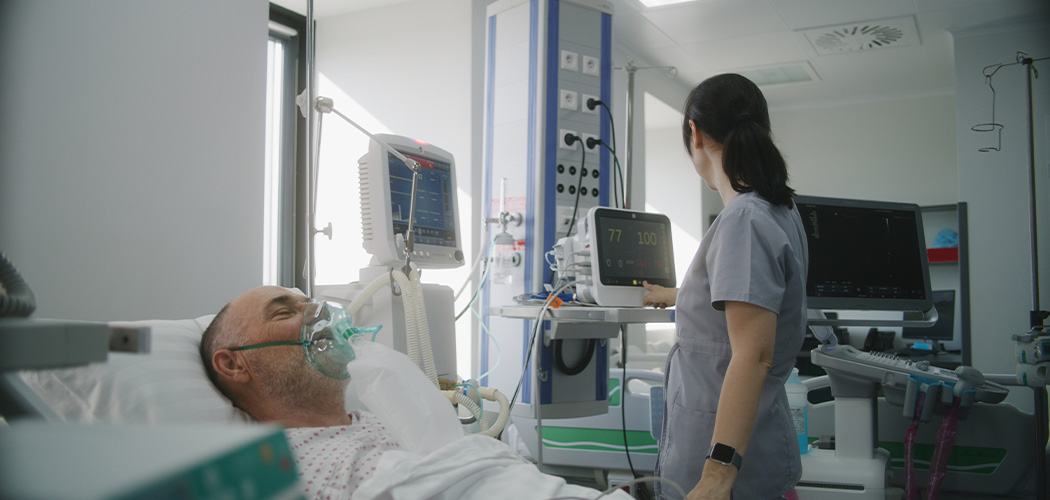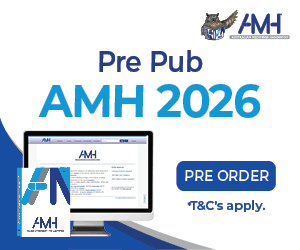A collaboration between the Central Adelaide Local Health Network (CALHN) Early Career Transition Programs (ECTPs) team and the Adelaide Nursing School (ANS – University of Adelaide) has led to improvements in the delivery of education for early-career nurses.
It has also strengthened consistencies in the delivery of simulation training between undergraduate education and transition programs in nursing.
The ECTPs were developed in response to an increasing number of novice nurses joining CALHN. The ECTP includes the formalised Transition to Professional Practice Program (TPPP) and the Supported Programs, which provide the opportunity for all novice nurses commencing employment in CALHN to access clinical support and professional development.
Each program was designed to meet the educational needs of early-career nurses by providing a structured support program, including regular educational activities to facilitate their transition into the workforce and improve the delivery of high-quality patient care. The programs provided targeted, individualised education to over 400 early-career nurses in 2023.
While the educational opportunities provided for early-career nurses had broadened considerably throughout 2023, formal and informal program evaluations identified the need for increased support and education regarding early identification and management of clinical deterioration.
The ECTP team utilised a pre-existing professional connection with ANS to collaborate on a project to refine the delivery of teaching and clinical simulation activities related to patient assessment and clinical deterioration.
The two teams worked together to focus on the design and delivery of simulation activities by providing educational support for members of the ECTP team regarding educational pedagogy and learning design. The project was an informal project that included the following activities:
- Preparatory sessions for the ECTP team about learning pedagogy and the theoretical basis of learning design and delivery.
- The ECTP team observed student nursing simulation activities delivered by Adelaide Health Simulation.1
- The ANS staff observed teaching and simulation activities delivered by the ECTP before and after changes in the ECTP program.
- Collaborative sessions between the ECTP and ANS teams focussed on peer review of teaching and learning activities and how that knowledge could be incorporated into the ECTP team’s work to refine the team’s skills and confidence in delivering teaching activities.
Through those activities, educational modalities in CALHN were refined using simulated patients (SPs) across a range of simulations. Using SPs has increased learning immersion, with actors being able to provide practical, real-time feedback and create better continuity between the undergraduate and ECTP programs. The use of SPs adds an element of realism for early-career nurses in the simulation, ie. an SP will simulate a full seizure that appears realistic and is confronting for the nurses. This requires early-career nurses to strengthen their ability to manage challenging scenarios more similar to real-world ones.
Observations of ANS simulation emphasised the importance and value of various structured debriefs from different perspectives to aid learning. As a result, ECTP session plans now include clearly defined time allocations for structured pre-brief, SP brief and debrief. Structured debriefing allows early-career nurses to reflect on the scenario, the SP can provide the ‘patient’ perspective of the nurses’ performance, and the facilitator encourages the nurses to reflect on that scenario and identify learning objectives met. The ECTP staff facilitating the simulations reported increased confidence in managing the sessions and felt better able to create a safe learning environment with better learning outcomes.
Clinical nurse educators who are part of the teaching team report increased confidence in managing the delivery of a range of teaching activities, including the simulations. Clinical nurse educators are highly experienced clinicians but may not have formal educational experience. This type of collaboration has better equipped them with the fundamentals of learning pedagogy that allows them to assist all members of the ECTP team in providing high-quality and consistent learning and simulation activities to early-career nurses.
As a result of the collaboration, there has been a noticeable improvement in feedback for teaching activities compared to previous years. Indicating that early-career nurses see the teaching structure as providing a safe and high-quality educational experience that is relevant and prompts reflection on their own clinical practice.
Working in partnership with ANS was important to allow for increased consistency in the design of the learning experience between the undergraduate nursing program and the ECTPs. The partnership led to a multitude of improvements, many of which were unanticipated. The increased awareness of what is required of early-career nurses was valuable for the nursing school to refine how students in their final year of studies are prepared for that transition to practice. We encourage other sites to consider these types of collaborations.
In a separate project, the Health Simulation team at the University of Adelaide have a publication that provides a structure for how this can occur in a more formalised format.2 Other examples of this type of collaboration can be found here. 3, 4
References
1 Adelaide Health Simulation. 2024 [cited 2024 11th Feb]. Available from: https://health.adelaide.edu.au/engage-with-us/facilities-services/adelaide-health-simulation
2 Davies E, Montagu A, Brazil V. Recommendations for embedding simulation in health services. Advances in simulation (London, England). 2023 Oct 6;8(1):23. DOI: 10.1186/s41077-023-00262-3.
3 Yi YJ, Lee H, Park K. The role of academic-practice partnerships from perspectives of nursing students: A cross -sectional study. Nurse Education Today. 2020 2020/06/01/;89:104419. DOI: https://doi.org/10.1016/j.nedt.2020.104419.
4 Direko KK, Davhana-Maselesele M. A model of collaboration between nursing education institutions in the North West Province of South Africa. Curationis. 2017 Sep 22;40(1):e1-e10. DOI: 10.4102/curationis.v40i1.1670.
Authors:
Caterina Feltrin, Advanced Nurse Educator, Central Adelaide Local Health Network, SA Health
Claire James, Nurse Educator, Central Adelaide Local Health Network, SA Health
Paul McLiesh, Program Director, Adelaide Nursing School, University of Adelaide








